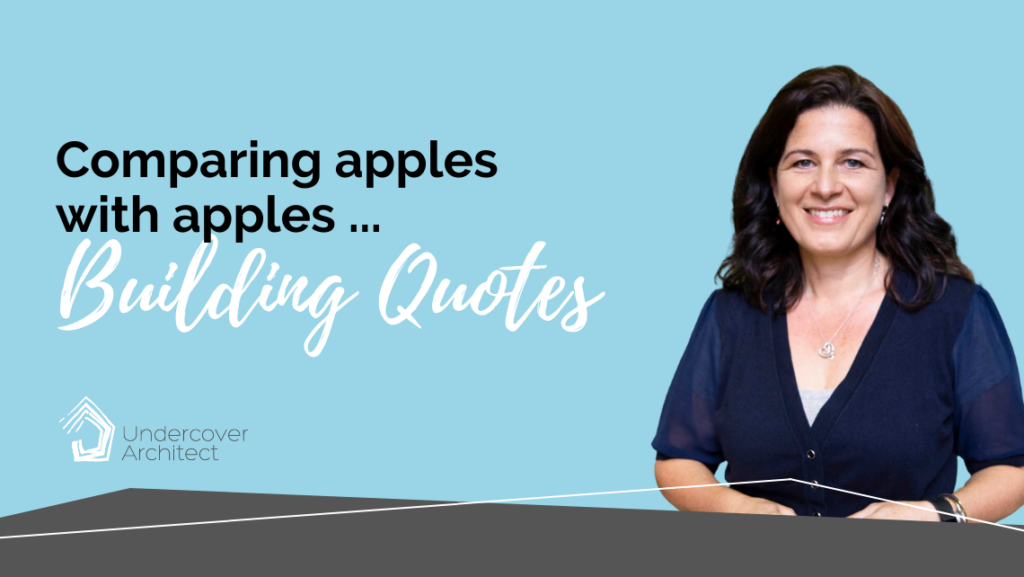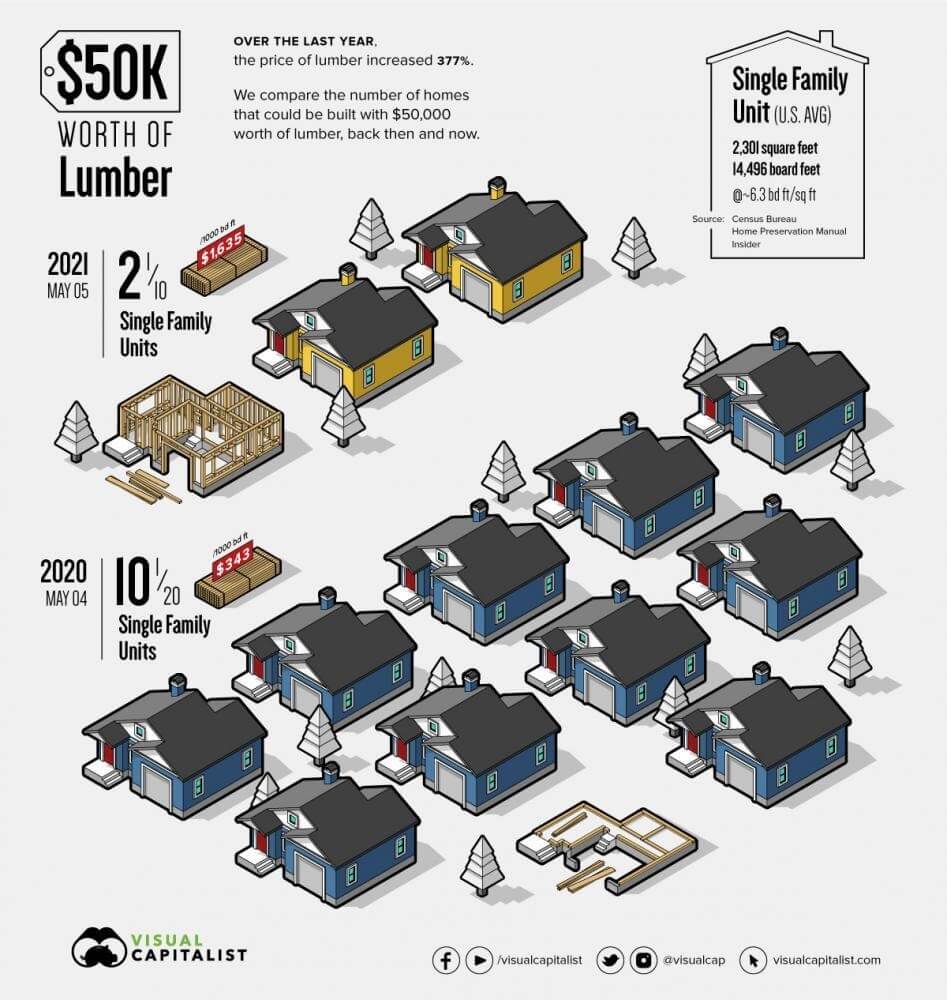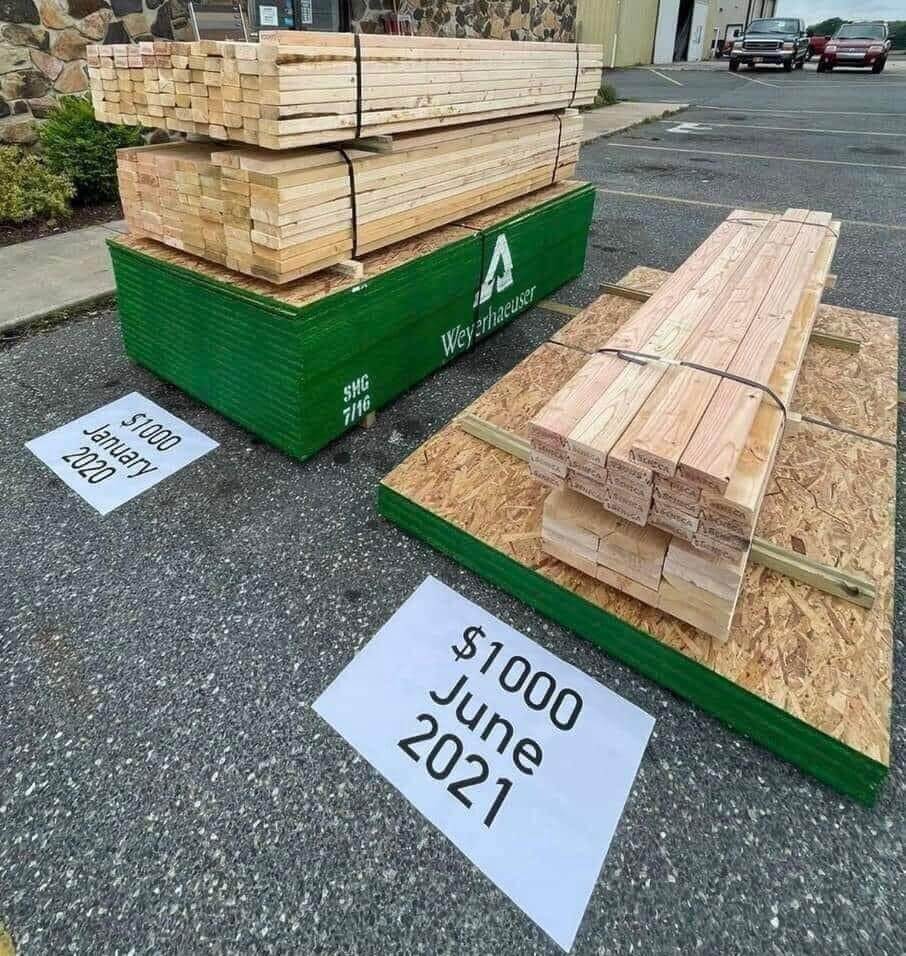
Comparing building quotes and trying to understand the differences between prices can be difficult.
Many homeowners dive into the nitty gritty detail to nut out the quotes they’re receiving.
However, this can be problematic, and not necessarily get you the results you’re seeking: budget and cost transparency, and a home you can afford to build.
I find that often, members of the UA Community can be ninjas at data analysis and breaking down all the info and research.
And as a data ninja myself – I see you fellow data ninjas 😉
However, where I see this ninja data analysis can come unstuck is in the interrogation of building quotes, and in discussions about what your project will cost – and what’s making it cost what it costs.
Let me say upfront: building and renovating can be big money.
Australia is one of the more expensive places to build and renovate in the world. New Zealand isn’t far behind.
(Like me, you’ve probably balked at the $100K – 200K complete home renovation and extension budgets on some of those USA reno / building TV programs.)
However, in this blog post, I want to share some info on how to approach the costing of your project, so you don’t tie yourself in knots with calculations and data analysis … and get lost in the weeds of unhelpful information.
Or lose loads of time in exercises that will spin your wheels.
Here we go …
#1 You don’t need to see line item costing
Being data driven, I see many homeowners expect (and demand) that their builder provide them with a quote that lists all the various trades, materials and items in their planned home, with a cost against each one.
The reasoning for this is so they can identify where the money is going in their project, and potentially achieve savings by targeting changes or reductions in specific areas.
However, I believe that this line-item costing approach really doesn’t serve you, your builder or your project.
I’m going to try some analogies here …
Your future home is not a cart of groceries that you can identify the premium items in, and switch your cheese this week for a cheaper brand, or decide you’ll wait till that big container of cold-pressed olive oil goes on special to get it. Or go to Aldi for some items instead.
Instead, it’s more like a fashioned piece of clothing, where the design, the cut, the assembly, where it was manufactured, the thread, the colour, the dye used on the fabric … all lead to what it costs.
And substitution or elimination can fundamentally impact the style, the durability, the look, the functionality and the experience of owning it.
Your builder may also not be interested in changes or reductions.
Yes, you may be able to find a cheaper electrician or light fitting.
However, your builder has to work with that person, coordinate their work, know they’ll be on site on time, be able to do their work within certain conditions and timeframes, and deliver a specific quality. And then, the builder has to warrant the work they do, and the items used.
So, your quote may not include the cheapest option – but the one that the builder knows they can stand behind and have confidence in delivering.
Yes, it can be helpful to know what is chewing your budget in your project.
Chances are it won’t be the finishes and fixtures alone.
It’s more likely to be the size of the home, the structural design, the site conditions and the big ticket items in your selections (think the large square metre coverage items, like roofing, glazing, wall cladding, flooring etc).
Instead of asking for a line item costing, ensure your builder is delivering a detailed line item SCOPE.
You want to know exactly what has been costed (described in a detailed, specific way), and what has been excluded from your quote. Plus, you also want to know what has been assumed or allowed for (because you haven’t selected or specified it).
I find that, when trying to compare apples with apples between builder quotes, the difference in pricing usually comes down to the omissions, assumptions and allowances.
And if you don’t have a detailed scope in your quotes, it’s hard to get to the bottom of these differences.
#2 Project prices move over the timeframe it takes to make your project happen
Your project may take two or more years to complete from start (deciding on a designer, etc) to completion (you moving into your finished home).
I’ve seen people do it inside 12 months, and I’ve also seen people take 3 to 5 years as well. It can vary based on you, your project plans, the area you’re in (and how onerous your council conditions are), team availability, and other factors.
Your construction costs will move over that timeframe – and so the budget you start with may be sufficient at the beginning, and not be sufficient at the end.
THAT IS INCREDIBLY FRUSTRATING.
This happens in the best of times – and right now, we’re seeing much larger increases than normal as various products and supplies move in price considerably. It’s not across the board, but it’s definitely on some critical items.
Finding out the cost of your future project is an iterative process that requires constant monitoring, and adapting.
It is also helpful to build in buffers and contingencies to give yourself the room for these increases.
Whether you do this by keeping $$ aside, or through your borrowing capacity (due to increases in equity or property valuations) will be up to you.
Creating a team that can help you do this is critical, so you can keep your finger on the pulse of changes as they happen.
For example, one of the members in HOME Method has been working with her building designer and builder through the PAC Process.
They’re getting close to contract preparation, but have decided to change the roof design from a truss to rafters due to the supply issues at the moment. This can be adopted fairly quickly and responsively due to her team structure and process.
Structure your team and project processes to build in this adaptability and responsiveness.
#3 Focus on what you can control
Even after doing this for 25+ years, I still struggle with the fact I can’t say to you “yes, you have exactly the right amount of money you need to do this reno or new build”.
Or tell you at the outset of your project exactly what your budget needs to be. There are so many factors that are outside of our control.
You may have seen these images doing the rounds lately.


As a homeowner building or renovating, you’re unfortunately at the end of a long line of people, processes and products that all need to get to your site to create your future home … and everyone has to get their cut along the way.
And whilst your build or reno cost is subjected to a long line of global players, large scale economic drivers, and other factors you can’t control – you’re spending the personal dollars you’ve saved or earned or borrowed to make this home a reality.
It can be hugely stressful and feel VERY personal that prices keep moving, supplies are delayed, and stuff is getting in the way of your desire to create a comfortable, safe place for your family to live and enjoy.
So what can you control? In reality, it’s not a lot.
I learned a very hard and valuable lesson a couple of years ago that my loci of control was about as big as an A4 piece of paper I could stand on.
It was a harsh learning for the control freak in me.
But it’s actually been really empowering. Because I can and do have full control over my thoughts, my reactions, and what I choose to do. You can do the same.
When it comes to your future home design, you might not be able to control these external factors that impact the cost and deliverability of your project.
You can though, control the decisions you make about the type and size of home you create, and who you create it with.
As I said earlier, if you want to save money, target the size of the home first. Then consider its structural design and how it integrates with the site.
(You may have heard both Aaron Wailes, building designer, and Duayne Pearce, builder, talk on the podcast about the $10s of thousands they saved their client through rejigging the structural design of a project).
You’ll go much further with those efforts than scrimping $10 or $20/m on your tiling, or choosing a $100 tap instead of a $300 one.
There are, of course, loads of resources available on Undercover Architect to help you when it comes to cost. It’s a topic we discuss A LOT!!
Here are some free and paid options for you:
- Season 3 of the podcast
- Line item vs lump sum costs
- The real life cost and time of renovating and building
- 12 tips to help avoid blowing your budget when working with an architect or designer
- Budget blowing mistakes when building or renovating
- What will you do with your suitcase of cash?
- There are bonus videos for Cost and Time inside the mini-course, the Get Started Guide
- Set and Stick to Your Budget is a great mini-course to help with cost and budget management in any project
Enjoy those resources – I hope you find them super helpful as you navigate your project, and work towards achieving your future home on budget.
If you’d like to learn how to choose the right builder, and learn how the specific checks to do, and questions to ask, when interviewing builders for your project >>> CHOOSE YOUR BUILDER
 With over 30 years industry experience, Amelia Lee founded Undercover Architect in 2014 as an award-winning online resource to help and teach you how to get it right when designing, building or renovating your home. You are the key to unlocking what’s possible for your home. Undercover Architect is your secret ally
With over 30 years industry experience, Amelia Lee founded Undercover Architect in 2014 as an award-winning online resource to help and teach you how to get it right when designing, building or renovating your home. You are the key to unlocking what’s possible for your home. Undercover Architect is your secret ally
Leave a Reply